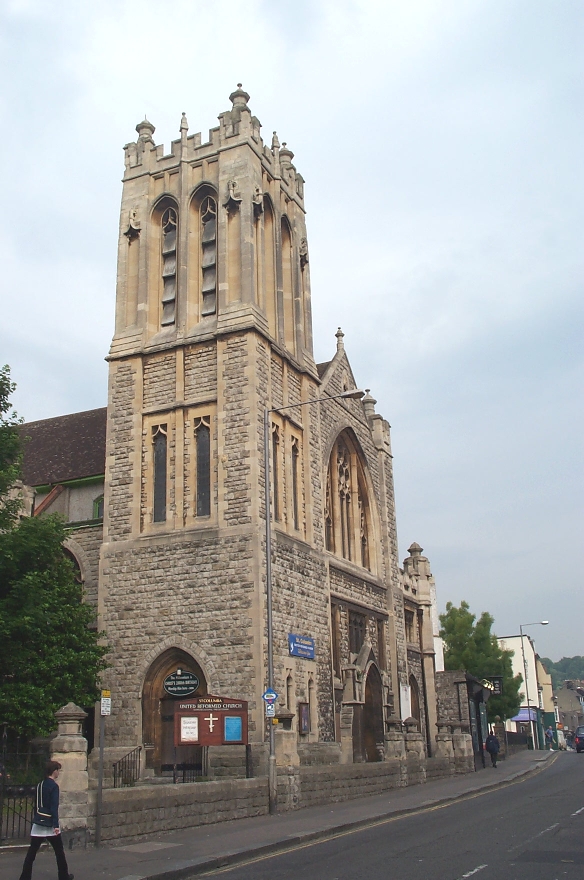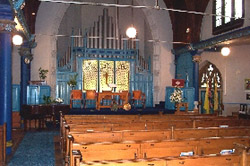St. Columba United Reformed Church - how it all began
According to J. Bavington-Jones' book "Annals of Dover", the Congregationalists - fore-runners of the United Reformed Church - first had a chapel in Dover in 1802.
When William III ascended the throne, there were three bodies of non-conformists in Dover, the Baptists, the Society of Friends and the Presbyterian followers of the Rev. John Davies, who had been ejected from St James's Church. They met in part of an old malthouse in Last Lane.
Zion Chapel on the site of the old malthouse, at the junction of Last Lane and Queen Street, then came into existence. Apparently the small congregation of Presbyterians that had gathered around Mr. Davis had occupied the old malthouse on suffrance, and in the year 1703, the year following the death of Mr. Thomas Papillon MP, his son Philip, who was a candidate for the representation of Dover, purchased and leased the old malthouse to the Presbyterians who transformed it, without much structural alteration, into a chapel.
In 1708, when David Papillon succeeded Philip as Member of Parliament for Dover, he gave them the chapel and helped to improve it. But Presbyterians, being few in Dover, the congregation dwindled, and the chapel was closed from 1769 to 1771.
Then some preachers of the Countess of Huntindon's Connexion re-opened it, and re-built it, with the exception of the north wall, in 1782. In 1802 the chapel was handed over to the Congregationalists, the Rev. W. Mather being the minister. In 1814 the chapel was re-built and enlarged.
In 1838, the Congregationalists built a large chapel in Russell Street, at a cost of £1,700.
Then they built what Mr. Bavington-Jones described as "a large and handsome" church at the bottom of High Street, a few paces above the Maison Dieu (Dover Town Hall). "Its tower, rising to a height of 80 feet, is a striking feature, and the whole is an ornament to the town," he said. The cost of the building was between £9,000 and £10,000, and the general style is Gothic of the Lancastrian Period. When this new church was opened on 7 September 1904, Zion Chapel, the original home of the Dover Congregationalists, was disposed of to a Baptist congregation, and their other chapel in Russell Street was retained for Sunday School and Mission purposes.
The Congregational Church in High Street became a United Reformed Church in 1972 when the Congregational Church in England and Wales merged with the Presbyterian Church of England. In 1981 the United Reformed Church entered into union with the Reformed Churches of Christ and in the year 2000 with the Congregational Union of Scotland.
The church was divided in half - horizontally - with the church being situated upstairs, and the church hall below.
As well as being a place of worship, the High Street church was also a focus for the community, with several groups meeting there. For many years it was used as a drop-in centre for asylum seekers and refugees who live in the town.
Work was going on to convert the church into flats but, sadly, on 22 September 2007, the building caught fire and was severely damaged. In June 2015 the building was sold at auction for £178,000.
